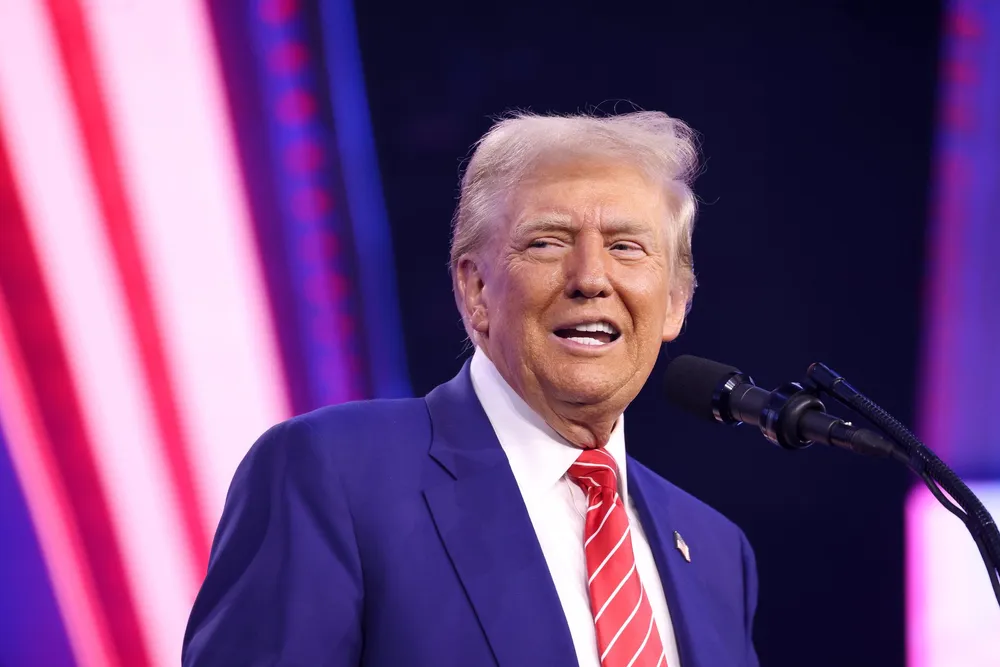Trump hits America's rivals and allies alike with sweeping 'Liberation Day' tariffs
Many of the nations and regions targeted, including the EU, Southeast Asia, and China, are key sources for clean energy supplies

President Donald Trump on Wednesday announced the US will impose a 10% tariff on all imports, and higher 11% to 50% rates for products from 60 nations, some of whom are key supply sources for the clean energy industry here.
The “baseline” tariff will take effect Saturday. The higher rates, which Trump called “discounted reciprocal tariffs,” in lieu of the universal one, will be effective 9 April.
He threatened to raise the rates on any country that retaliates against the US, which some including China have indicated they will do.
The 60 nations drawn from a list of 180 have been especially egregious in employing “unfair” trading practices over the past several decades, according to Trump aides.
These nations, which include numerous close allies, have often played the US for a “sucker” on trade, Trump claimed, after announcing the moves at a White House ceremony.
He said aside from punitive tariffs, underhanded trade practices could include currency manipulation, tax policies, and use of sweatshop labour.
Resulting massive trade deficits threaten US economic and national security, his aides said. In 2024, the trade deficit was a record $1.2trn, the fourth consecutive annual deficit more than $1trn.
"Large and persistent annual US goods trade deficits are caused in substantial part by a lack of reciprocity in our bilateral trade relationships," he said in his executive order.
Trump argues that the post-World War II international economic system was based on faulty assumptions, notably that if the US led the world in liberalising tariff and non-tariff barriers the rest of the world would follow.
Neither has US-driven liberalisation resulted in increased domestic consumption among trading partners approaching levels in America. As a result, the US has accrued large and persistent goods trade deficits.
Trump asserted the US was being “kind” in not slapping tariffs at the same level as those applied to US goods by China, the EU, India, Japan, Taiwan, Vietnam, and dozens of other nations which Trump did not immediately name.
For example, he claimed the upcoming 46% tariff rate for Vietnam, a leading solar panel supplier, was about half the 90% levy in effect there on US goods.
Using a formula his administration created to calculate a reciprocal tariff rate that he poorly explained, Trump said China will face a 34% levy on top of 20% he imposed earlier, EU (20%), India (26%), Japan (24%), Malaysia (24%) South Korea (25%), Switzerland (34%), Taiwan (32%), and Thailand (36%).
The Southeast Asian nations are major suppliers of Chinese branded solar cells and modules to the US, while the EU originates onshore wind turbine blades, nacelles, and towers, and transition pieces and towers for offshore wind turbines employed here.
“If you want your tariff rate to be zero,” said Trump, “then you build your product right here in America.”
While the baseline tariff is half the 20% under discussion this week at the White House, those country-specific are higher than anticipated by economists and financial markets.
The new levies will not apply to imports from Canada and Mexico as long as 25% tariffs remain in place against those nations, according to law firm Norton Rose Fulbright in a note to clients.
"If those tariffs are suspended, then a 12% tariff would apply to goods that do not qualify as originating in Canada and Mexico under the US-Mexico-Canada free trade agreement," it said, referring to the trade pact signed in Trump's first term.
The new tariffs also will not apply to certain items that he has already set apart for present or potential future sector-specific levies. These include certain critical minerals, energy and energy products, aluminum, steel, and some downstream products that use those metals and copper, and semiconductors, according to the law firm.
Many of those items are used here to either manufacture or assemble storage batteries, solar module, and wind turbine components.
The clean energy sector is already under pressure from his administration. Trump has taken direct aim at offshore wind with onshore wind which he vowed to stop on "day one." Onshore wind and solar also in his crosshairs to a lesser extent.
The barrage of tariffs will raise costs for developers already grappling with high interest rates and labour shortages, along with his executive orders that have frozen permitting for projects on federal lands.
Perhaps most surprising in Trump’s announcement - which he called “Liberation Day” for US trade policy - was the 10% tariff on goods from the UK and 17% on Israel, two of this country's closest allies.
The US has a trade surplus with the UK and the two nations have begun negotiating a new trade agreement. A recent visit by Prime Minister Keir Starmer went well, according to Trump.
He left the door open to lower tariff rates for countries that take what Trump called "significant steps to remedy non-reciprocal trade arrangements and align sufficiently with the US on economic and national security matters."
(Copyright)